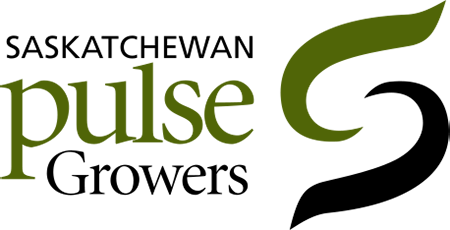Saskatchewan pea producers were shocked by India’s announcement on November 10 that it has slapped a 50 per cent import duty on Canadian peas, effective immediately.
“We understand that this means that imports of peas into India, from Canada and other origins, will be subject to a 50 per cent import duty,” Saskatchewan Pulse Growers commented. The new duty from India impacts the export of this year’s crop from Canada. As of November 9, green and yellow peas from Canada will see the import duty rise from zero to 50 per cent. The duty will remain in place until changed or rescinded by India’s government.
“It came as a surprise to everyone,” Gordon Bacon, CEO of Pulse Canada stated. He noted that there were rumours floating around the industry since the summer that India might implement a tariff. “We were surprised it went to the maximum allowed, 50 per cent, under the WTO agreement.”
“We are disappointed with the Indian Government to raise the tariffs, which is within their rights, but we see it as short-sighted,” stated James Kettel, executive director of the Trade and Value-added Branch of Saskatchewan’s Agriculture Ministry.
The move comes as a significant blow to Saskatchewan pea producers. “Forty per cent of Saskatchewan peas go to India,” said Kettel.
According to Saskatchewan Pulse Growers, Canada is India’s largest supplier of pulses and India is Canada’s largest market for peas. The new tariff would add significant costs to Canadian pea exports to India and the province’s pea producers will likely be looking elsewhere to market their product. “It will have an impact on exporters,” he added.
“We expect that the resulting increase in cost of imported peas will have a significant negative impact on pea trade to India,” Saskatchewan Pulse Growers commented. Saskatchewan’s pulse crop production has seen great advancement in the past few years. Over 80 per cent of the province’s production is exported to international markets, stated the Saskatchewan Pulse Growers. “Which means that growers need to have access to appropriate markets to ensure the industry’s competitiveness going forward.”
At the same time, Bacon thinks that it is too early for producers to change their seeding plans for next year. He noted that India had implemented a 10 per cent duty about a decade ago which was later lifted. Bacon views this large hike in duty as a change in politics by India.
“This is an extreme shift,” he stated. “Yes, it was a surprise.”
Bacon explains the move as likely triggered by India’s internal events. India is in the middle of an election campaign and it is trying to address incomes for farmers, who are some of the poorest in that country. India produced a large pea crop this year, but prices have dropped. “It’s trying to balance domestic production and prices,” he added. India is the world’s largest importer of peas and it also produced the most pulses in the world.
Kettel sees the new duty as a temporary measure which would likely be lifted once India’s pea stocks have become depleted.
In the meantime, Saskatchewan pea producers now have to look for other export markets because the province’s processing capacities would not be able to handle such large production capacities.
“Saskatchewan’s processing capacity wouldn’t be able to support this volume of production,” Kettel said.
Saskatchewan pea producers will be competing for a smaller market share with other countries that had good pea crops this year like Ukraine, Russia, France and the U.S. For now, the province’s pea producers have other options. China is the second largest market for pea values and it offers more opportunities in the feed market, said Bacon.
While India and Canada do not have a free trade agreement, bilateral trade has been increasing between the two countries. “We’ve had a very strong relationship for the last 15 years,” Bacon commented about Canada-India trade relations. In 2017 so far, Saskatchewan has exported over 650,000 tonnes of peas to India, equalling about $275 million.
Canada has already faced a previous trade issue with India over lentils back in February. India required Canada to fumigate shipments for pests with methyl bromide in port before export, instead of once the shipment reached India as was the previous practice. Canada maintains that the fumigation does not work well in Canada’s cold climate.
Canada obtained a fumigation exemption from additional inspection fees on July 5 that was set to expire on September 30. Saskatchewan Pulse Growers reported that by October 2, Canada has still not received official documentation about another extension of the fumigation exemption. As a result, pulse exports from Canada to India had already slowed down before the new duty on peas was announced.
Meanwhile, Saskatchewan’s Economy Minister Steven Bonk departed for India on a trade mission on November 11-17. His agenda included meeting Indian business interests, including representatives from the India Pulse and Grain Association. One of the priorities of the trade delegation was to raise awareness about Saskatchewan’s strategic importance to India as a major source of imported agriculture products.
Saskatchewan exports to Asia increased from $2.3 billion in 2005 to $8 billion in 2016, making Asia the most important emerging export market for the province.
The province’s total exports in 2016 were $26 billion, with India С����Ƶ the province’s third largest destination. Exports to India were $1.5 billion for 2016, which is a growth of 272 per cent over the last 10 years. Of these exports last year, $1.1 billion were pulse crops.




